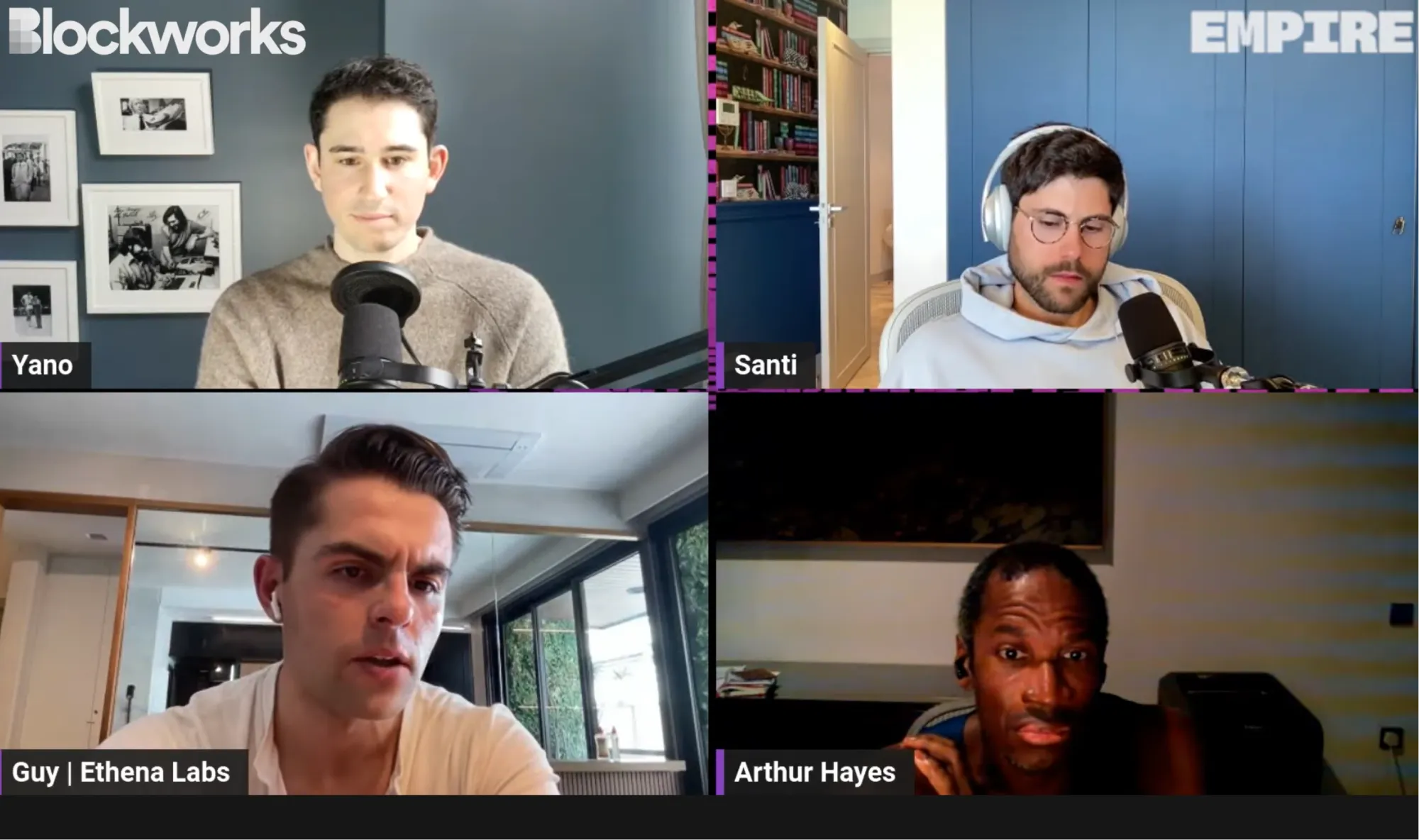
As the crypto markets roar back to life, so do DeFi platforms offering jaw-dropping yields.
Ethena claims that it can deliver returns of more than 60% to those who hold USDe — a so-called "synthetic dollar." The project argues that a heavy reliance on stablecoins backed by fiat is "the most important issue facing crypto today," and claims assets like USDC have a "centralized kill-switch."
USDe is said to offer an alternative, and achieve high yields, by passing on rewards from staked Ether — and shorting ETH perpetual future contracts, which often trade at a premium to the cryptocurrency's spot price on the market.
But this approach has been met with skepticism by some in the crypto space, with parallels drawn to algorithmic stablecoins that lost investors millions of dollars. The biggest such collapse was ТerraUSD in May 2022, which lost its peg and plunged from $1 to $0.35 in the space of two days.
Eyebrows have also been raised because of how Ethena is backed by Arthur Hayes, BitMEX's former co-founder, who pleaded guilty to violating the U.S. Bank Secrecy Act. The crypto entrepreneur was fined $10 million and spent six months under house arrest.

Explaining why the status quo needs to change, Hayes told the Empire podcast earlier this month: "It would be literally a phone call from any regulator, or any major bank saying 'we don't wanna have Tether in the system anymore' and boom — Tether's gone."
Hayes believes USDe can be used by "anyone who wants to park money into a crypto dollar that can ride around the ecosystem when they don't want to own Bitcoin or Ethereum."
In a recent blog post, he stressed that he wasn't criticizing USDT — and doesn't believe the business is a financial fraud. But he added: "I believe that Ethena can eclipse Tether as the largest stablecoin. It will take many years for this prophecy to manifest itself."
Hayes also says comparisons between USDe and ТerraUSD are unfounded because they generate yield in completely different ways, writing:
"Ether is now a deflationary currency. The USD is an inflationary currency. If in the future there is less ETH but more USD, then ETH/USD should trade at a higher exchange on a forward basis. That means any leveraged forward derivative such as a perp swap should trade at a premium to the spot. Funding should for the most part be positive, which means Ethena receives interest. The data backs this up."
Ethena initially raised $6.5 million in a seed round led by the crypto venture fund Dragonfly, with Hayes and major derivatives exchanges also participating. In February, an additional $14 million was raised in a strategic funding round, resulting in a $300 million valuation. But the company was left red-faced after PayPal Ventures, Binance, Gemini and Kraken were erroneously listed as investors.
USDe went on to launch on Feb. 19, and the prospect of tantalizing yields may help explain why its total supply has exceeded one billion just a month later, in what has been described as "the fastest time period in which a dollar-based cryptoasset has reached" this milestone.
Questions about why such above-average yields are possible are encouraging in a way. They show that some lessons have been learned after the spectacular excesses of the last bull run. Then again, USDe's runaway success shows that astronomical returns will always be catnip to degens.
Conor Ryder, Ethena's head of research, has said "USDe isn't safer or better than any other projects," an insurance fund has been established in the event that funding rates go negative, and the project takes risk seriously.
He also pointed to historical data that shows ETH funding has only been negative 20% of the time over the past three years — falling to 11% when stETH is used as collateral.
Of course, past performance isn't necessarily a reliable indicator of what lies ahead in the future — especially in such a volatile market. Ethena's big test will come when, or if, the music stops.
